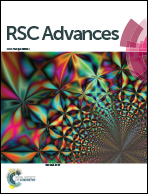The optimized composition of Mg–Al–Cu metallic glass investigated by thermodynamic calculations and an atomistic approach
Abstract
Issues related to the glass formation of ternary Mg–Al–Cu metallic glass are investigated by thermodynamic calculations and an atomistic approach. Based on the extended Miedema model, thermodynamic calculations show that Mg–Al–Cu metallic glasses are favored over a large composition range, and that the sub-region of MgxAlyCu1−x−y (x = 20–30; y = 30–40; 1 − x − y = 35–45) shows a better glass formation ability than the other compositions. Then, a realistic interatomic potential was constructed for the Mg–Al–Cu system and applied in Monte Carlo simulations to predict the favored composition at the atomic level, and even pinpoint the optimized composition. The simulation not only predicted a quadrilateral region, within which Mg–Al–Cu metallic glass formation is energetically favored, but also pinpointed an optimized sub-region within which the amorphization driving force (ADF), i.e. the energy difference between the solid solution and the disordered state, is larger than that outside. The predictions of the atomistic approach are consistent with the thermodynamic calculation. The simulations not only provided predictions for producing Mg–Al–Cu metallic glasses, but also revealed the physical origin of the crystal–amorphous transition, which could be of great help for designing ternary glass formers.


 Please wait while we load your content...
Please wait while we load your content...